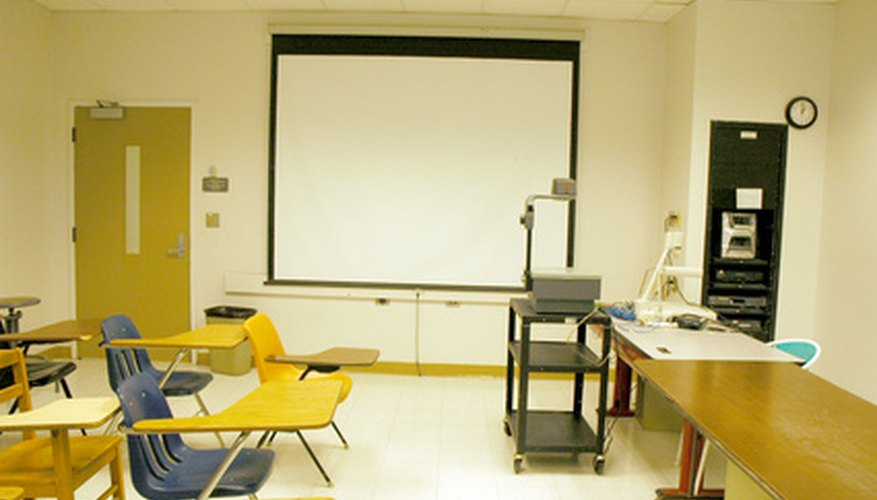A student who intentionally creates a disturbance in class that directly interferes with the teacher's ability to instruct the class and with other students' ability to learn is considered disruptive. Disruptive behaviour can have negative effects on not only the classroom environment, but also on the school experience as a whole.
Types of Disruptive Behaviors
There are a variety of ways a student might behave in a disruptive manner. Some are minor and often easily ignored, but a few types of disruptive behaviours go beyond rudeness. A student who monopolises discussions or speaks on particular subjects with no relevance to the current lesson is exhibiting a disruptive behaviour called grandstanding, or showing off. Excessive talking with other students during class or passing notes is another type of disruptive behaviour which can affect the entire class by making the teacher difficult to hear or forcing the teacher to interrupt the lesson in order to stop the chatter. Another type of disruptive behaviour occurs when a student challenges the teacher's authority or knowledge on a subject because of anger over a grade or a general dislike of that particular teacher. This type of behaviour can evolve into verbal or physical threats to the teacher or other students. Less obvious disruptive behaviours include lateness, sleeping in class, and bringing in and using phones or other electronic devices.
- There are a variety of ways a student might behave in a disruptive manner.
- Excessive talking with other students during class or passing notes is another type of disruptive behaviour which can affect the entire class by making the teacher difficult to hear or forcing the teacher to interrupt the lesson in order to stop the chatter.
Negative Effects on Teaching
Disruptive students interfere with the teacher's ability to teach effectively. The behaviours require large amounts of the teacher's time and attention. The teacher must stop the lesson or discussion to address the behaviour, and this takes away from the valuable time needed to instruct the rest of the class. If the disruptive behaviour is threatening, it may challenge the teacher's authority and can create tension in the classroom, which pushes learning to the background. Disruptive behaviour by one student also encourages other students to do the same, which compromises the teacher's authority and ability to control the group.
- Disruptive students interfere with the teacher's ability to teach effectively.
- Disruptive behaviour by one student also encourages other students to do the same, which compromises the teacher's authority and ability to control the group.
Issues for Students
The learning process for other students is affected when one or more students behave in a disruptive manner. Constant interruptions can interfere with focus. Students are forced to wait while the behaviour is addressed, or they are sidetracked by the disruptive student's attempts to be noticed. This can result in lower grades and behavioural issues with other students as well as with the student who is causing the interruption. Peers tend to have a significant influence over each other, and if one student is disruptive, it may encourage similar behaviour in other classmates who might not have had trouble otherwise.
- The learning process for other students is affected when one or more students behave in a disruptive manner.
- Peers tend to have a significant influence over each other, and if one student is disruptive, it may encourage similar behaviour in other classmates who might not have had trouble otherwise.
Negative Impact on the School
Often schools must focus time and resources that could be used elsewhere on trying to stop disruptive behaviour in students. This takes away from the educational mandate of most schools, which is usually to provide a safe, effective learning environment for all students. Teachers are often not equipped to deal with some types of extreme disruptive behaviours, and as a result, the student is either sent out of class or the school must enlist the aid of outside professionals to try to intervene. This takes resources and funding, which could be better used to improve the educational environment for all students instead of just one.
- Often schools must focus time and resources that could be used elsewhere on trying to stop disruptive behaviour in students.
- This takes away from the educational mandate of most schools, which is usually to provide a safe, effective learning environment for all students.
